Jamie and Jeff Benson weren’t planning on becoming exhibitors—much less entrepreneurs—when they began their careers as certified public accountants. The job security of working at Deloitte, one of the “big four” accounting firms, was hard to pass up—at least until Jeff was assigned to take on a movie theater client, Silver Cinemas, in 1995. Three years later, Jamie and Jeff had gotten married, and they decided to take the plunge and open their first cinema together. The Bensons’ first movie theater opened in 1999 in the town of Granbury, Texas—a short drive from Fort Worth. It would become the first of many new sites the couple would open, including pioneering concepts like dine-in, as founders of Movie Tavern, and, most recently, Family Entertainment Centers, after starting Cinergy Entertainment in 2009.
Jamie and Jeff Benson joined Boxoffice Pro to talk about their careers as exhibitors ahead of receiving the Visionary Award at CineShow 2022.
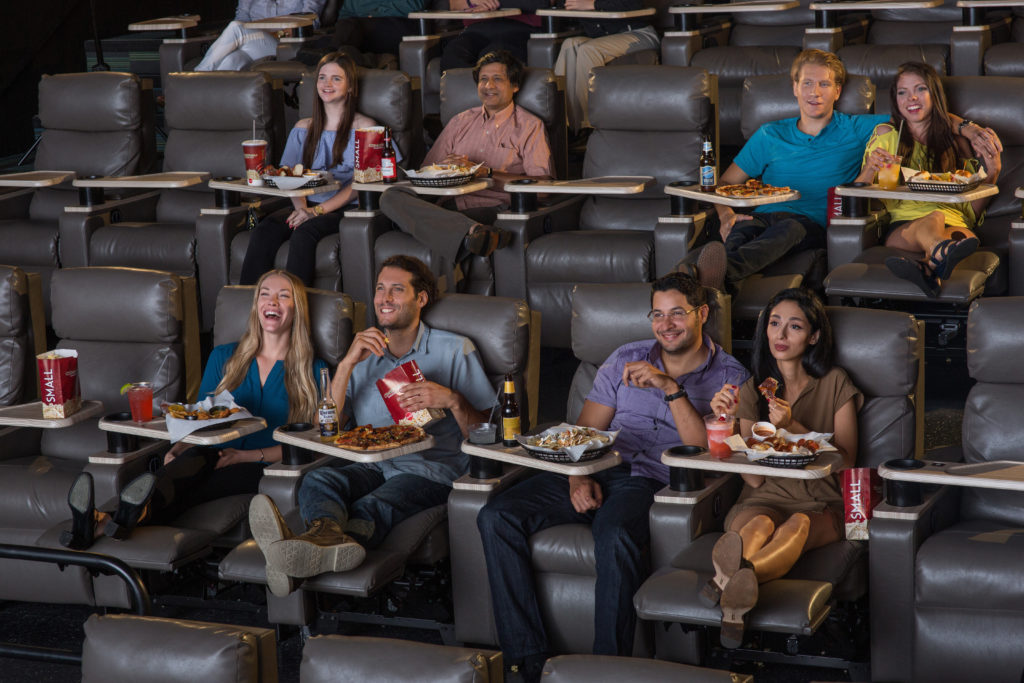
Let’s start back in 1998. You guys were coming home from your honeymoon, and that’s when Jeff quit his job at Deloitte to become an exhibitor.
Jamie Benson: He doesn’t believe me when I say this, but I didn’t think it would really happen.
Jeff Benson: You didn’t think I was serious! Even though I had written piles of business plans, floor to ceiling.
Jamie Benson: I don’t come from an entrepreneurial background, Jeff doesn’t either. I didn’t have anyone that I could look to and say, “Oh yeah, you really can start your own business.” We were just two CPAs working for big firms. I wasn’t sure that opening our own theater would really happen.
What led to the opening of your first theater together?
Jamie Benson: Before we caught our flight home from our honeymoon, back in the days when you had to call in and check your voicemail, we found out that we had gotten the loan. They said that the final decision on the board approval to give us the loan came because we both passed the CPA exam on the first try.
Jeff Benson: That was in 1998, when we built the precursor to Movie Tavern, a small six-screen theater outside Fort Worth in the town of Granbury, Texas. It was just a traditional theater, didn’t have food or alcohol. We designed and built it from the ground up, started construction in 1998, and opened it in 1999.
Then, all the major theater chains—including my former audit client, Silver Cinemas—filed for bankruptcy. UA went under. So did General Cinemas and Loew’s. A lot of theaters were being closed and left empty with landlords. That’s what created the opportunity for Movie Tavern. I think we signed the first Movie Tavern lease in June of 2001 and opened it in November of that year. It was a former General Cinemas location in Fort Worth. That’s when we realized that we might be on to something big with the dinner-and-a-movie concept.
That must have been a massive shift for you guys, going from a nine-to-five office job to working seven days a week tearing tickets and selling popcorn.
Jeff Benson: I have a picture of Jamie serving popcorn and soda—this would be in 2003, when our first son was born. He’s strapped into the BabyBjörn in front of her. It was the opening weekend of The Passion of the Christ, and it was crazy. My parents were there helping, everybody was serving popcorn because we had crowds like crazy.
We learned from the ground up. We knew the financial aspect of everything but didn’t really know the operations of how to run a theater. With Movie Tavern, we certainly didn’t have a background in food service. So we hired people and cultivated the knowledge on the fly, because dine-in wasn’t really established in exhibition back then. To a small degree, there were the “brew-and-views,” mostly second-run locations, but there weren’t many of us doing first-run. Dine-in was in its infancy back then.
Jamie Benson: We were young, energetic, and naive enough to always respond to challenges with hey, why not?
When did you first begin to expand into a circuit?
Jeff Benson: The first Movie Tavern opened in Fort Worth in 2001. We didn’t open our second one, in Arlington, until 2002. The first one wasn’t particularly successful, so we held off signing that lease for a bit. As you may recall, in 2001 the movie business was in the crapper after 9/11. Nobody was going out; we were all shell-shocked. We didn’t sign the lease on the second one until May 2002, when the first Spider-Man came out. That’s when we said, “OK, the movie business is back. Let’s go ahead and sign that lease on the second Movie Tavern location.” We got it open quick, in July of 2002.
After that we did another traditional theater outside Austin, down in the hill country, in Marble Falls, Texas. Then we opened a third Movie Tavern, in Bedford, in 2003.
Jamie Benson: That Bedford location was actually the movie theater where I had my first job, back when it used to be a General Cinema site.
Jeff Benson: We had five theaters total at that point. That’s when we partnered with Lee Roy Mitchell, of Cinemark fame, and formed Movie Tavern Partners. We moved our offices back from Granbury, where we’d started, to Dallas with Lee Roy as our 50 percent partner. He injected fresh capital into the business, and we were off and running, expanding the Movie Tavern concept. We added 10 more theaters; I believe we had 13 when we sold our share to Lee Roy in 2008.
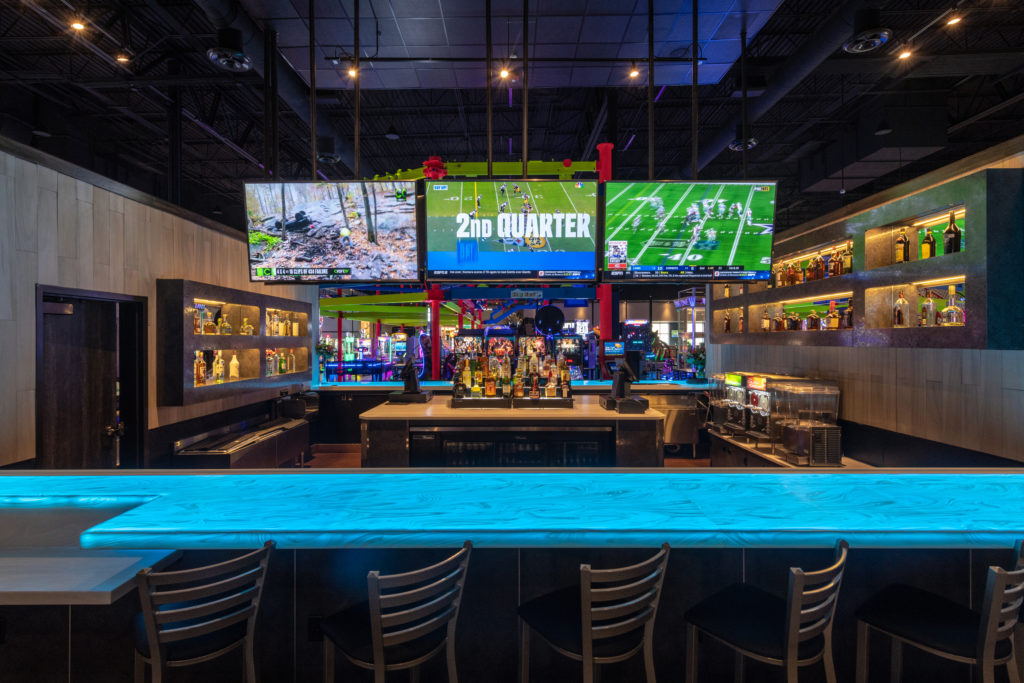
It wasn’t much long after selling your stake in Movie Tavern that you decided to jump back into exhibition by pioneering another new concept, the Family Entertainment Center (FEC) through Cinergy. What made you come back into the business?
Jamie Benson: We were retired for about a week before Jeff started getting restless. Our first Cinergy location was never intended to be an FEC. It was going to be a traditional theater; we were going to go back to our roots. We just found ourselves with extra square footage in the building we picked.
Jeff Benson: The first Cinergy was actually a shell building that had been built six years earlier and never finished. When we laid in the movie theater component, it left a couple of big rooms off to the side of the lobby.
Jamie Benson: Originally, we thought we would just lease the space out, but this was 2008—we were in the middle of a recession.
Jeff Benson: We decided we needed to do something with that extra space ourselves, so I went to IAAPA’s (International Association of Amusement Parks and Attractions) annual convention in the fall of 2008 to see what we could do. I came back and said, “We’re going to do a game room and laser tag.” That’s when I started getting in touch with Neil Hupfauer, one of the most accomplished executives in the FEC sector, to help us launch this concept. To some degree, it was dumb luck that got us into the FEC business. But as time went on, we figured out there was some magic to putting all these amusements under one roof.
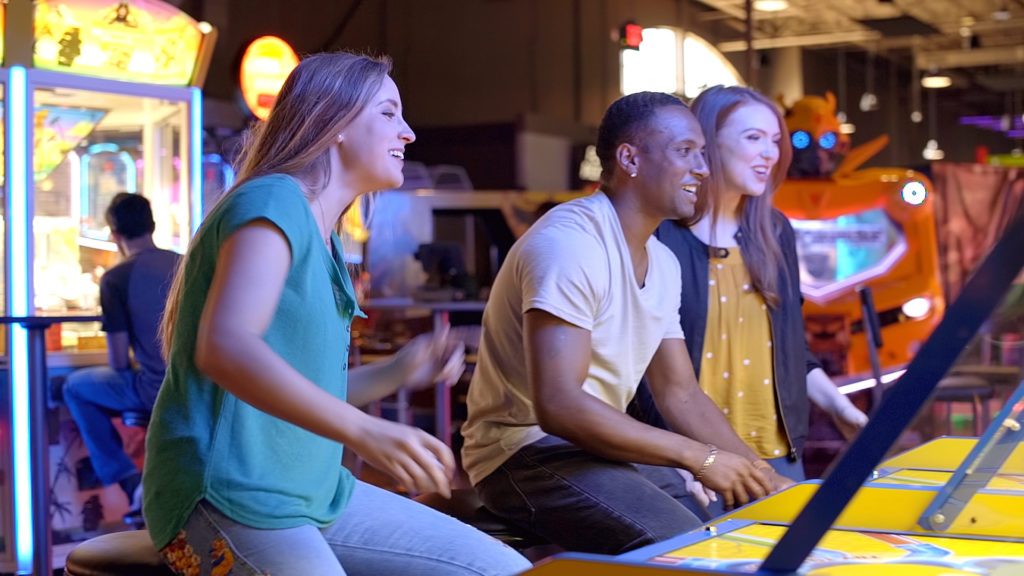
When did that first Cinergy location open?
Jeff Benson: We opened the first Cinergy in June of 2009 in Copperas Cove, Texas, near Waco. It had a decent-sized game room and a laser tag arena to go along with eight cinema screens. We built a second location in 2010 and sold it in 2014. The third one we developed was in Midland, Texas, in 2013. It was similar to the first, with a medium-size game room and laser tag.
The Midland location was when we started putting more focus into the games. Neil was having a bigger influence on us and preaching the benefits of the FEC business. Although we didn’t really know at the time how it was going to mesh with the movie theater business, they turned out to be very complementary. We opened Midland in 2013, and it was a smashing success from the very first day.
Did your success with Cinergy’s Midland location encourage you to expand further?
Jeff Benson: We opened Midland on a Friday, and by Monday I had already started looking for a location in Odessa, which is 15 minutes away. It took us about three years to get that location open, but we went from a 50,000-square-foot store in Midland to a 90,000-square-foot store in Odessa. In that one we added bowling, doubled the size of the game room to well up over 100 pieces, and installed a big laser tag arena and a ropes course with a zip line.
Jamie Benson: That Odessa location was our first true Texas-size site.
Jeff Benson: We opened it in November 2016. It felt like it was part of a progression. We started in 2009, built one in 2010 that was similar to the first, then went bigger in Midland in 2013, and went even bigger in Odessa in 2016. We were experimenting with the concept and finding out what was working best. But honestly, we didn’t perfect the concept until we opened in Amarillo, Texas. We opened a 90,000-square-foot site there in 2018. That one received the award for the best FEC from IAAPA.
Amarillo was where we discovered that it’s all in the layout. When you’re programming a giant game room, with food and beverage, a movie theater, 16 to 18 lanes of bowling, escape rooms, axe throwing, and virtual reality—the layout of the facility is very important. It took us nine years, from 2009 to 2018, to find the right layout. As a result, there is a huge difference in the performance of the game room between our first FEC and the later ones. When I say huge, I’m talking like 20 times difference in sales.
To a large degree, you’re building a casino for families—with games and all sorts of different attractions. You want to put the big anchor attractions in the back, and you have the impulse buys toward the front. People-flow within these buildings is very important, because you can have six, seven thousand people a day come through your doors on a busy Saturday.
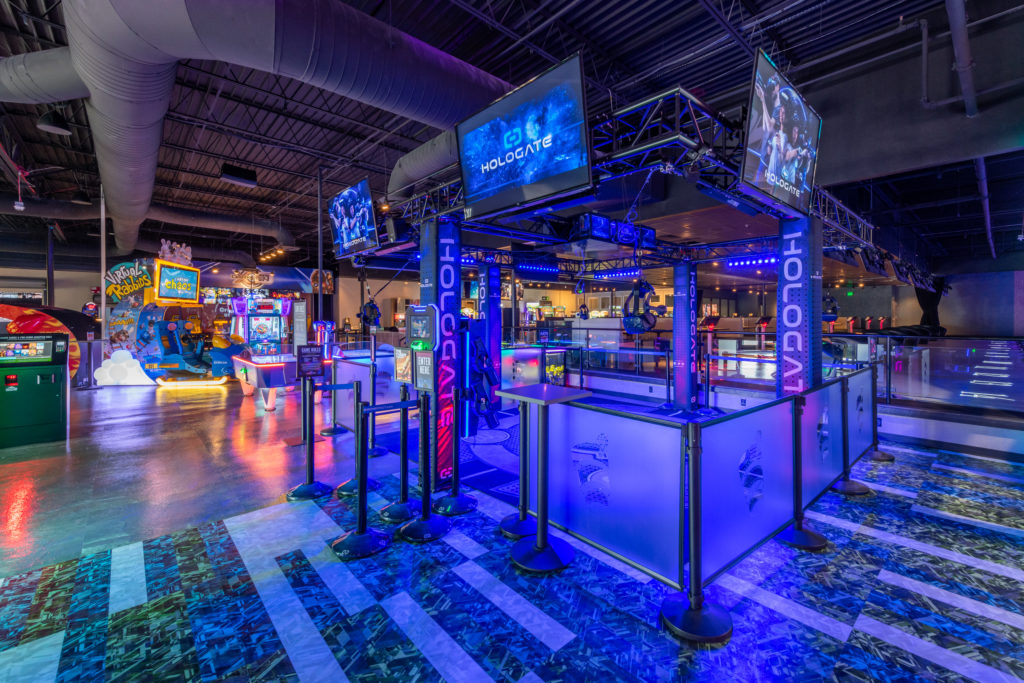
It must have been so frustrating to have perfected the concept and received the award from IAAPA in 2018, only to close all your sites with the emergence of the pandemic in 2020. Once you were allowed to reopen, however, how much of an advantage did you have, not needing to rely on the movie theater component to bring back patrons?
Jeff Benson: There’s no other way to put it: It flat-out sucked. I will tell you, however, that by March 2021, it was like a coming out party across Texas. We did record sales in the FEC in March and April of 2021. The movies still weren’t clicking; the exhibition side of our business was still hobbled in 2021, but the FEC was absolutely going gangbusters. We did game room numbers that we will never see again because all those people that would have been going to the movies were spending their entire time bowling, playing games, and eating and drinking. The FEC brought us back much quicker than traditional or dine-in exhibitors, who were so reliant on Hollywood releases.
When did the exhibition component of your FECs start to rebound?
Jeff Benson: Godzilla vs. Kong was the first big release that really surprised us.
We hadn’t seen crowds like that for a movie in a year. We were forced to do all these layoffs during the closures and were slowly rebuilding our staff when Godzilla vs. Kong came out and brough back a huge audience. We had Tom and Jerry come out shortly after.Those two movies were the one-two punch that convinced us we were going to have a summer movie season in 2021.
I don’t want to short sell the theater side of the equation within the Cinergy concept. Our movie business is very complementary to the FEC. When there’s not a big movie, people will do a lot of the other things we offer. But on the big movie weekends, our locations are all about Top Gun: Maverick or Lightyear. We see that in our attendance. The movies drive a lot of the people into our buildings, and that’s how they get exposed to everything else we offer.
Movies are the secret sauce of the FEC business. Without them, you’re offering the same thing week in and week out. There’s no urgency to go, no call to action. But when Top Gun: Maverick or The Black Phone is available on your screens, and people know it’s only going to be there for a short number of weeks, there’s a call to action to get to the theater to see it.
What is the biggest difference between operating an FEC and a traditional movie theater?
Jeff Benson: I would say the biggest thing I’ve learned is that you better have a damn good team and a lot of operational knowledge.
Jamie Benson: And a diverse range of knowledge, too. We’ve got bowling people, games people, food and beverage people, and movie people. There are a lot of different skill sets you need to balance.
Jeff Benson: For us, it started with Neil Hupfauer. He taught me a lot about running FECs and wrote the playbook on the bowling-anchored Family Entertainment Center. We took his knowledge and combined it with our experience running Movie Tavern—that’s how it took off. We have a fantastic team, and that would be my biggest takeaway from this experience: You can’t do this by yourself. You need to surround yourself with experts.
Jamie Benson: As a result, we have a much higher corporate count and overhead than a theater chain of our size.
Jeff Benson: Simply because there is a lot of complexity to FECs that a plain movie theater chain doesn’t have. We get a lot of revenue from games, which are 100 percent margin, as opposed to splitting it with the studios. It is a different business model, one that requires you to have experts in different areas to succeed.
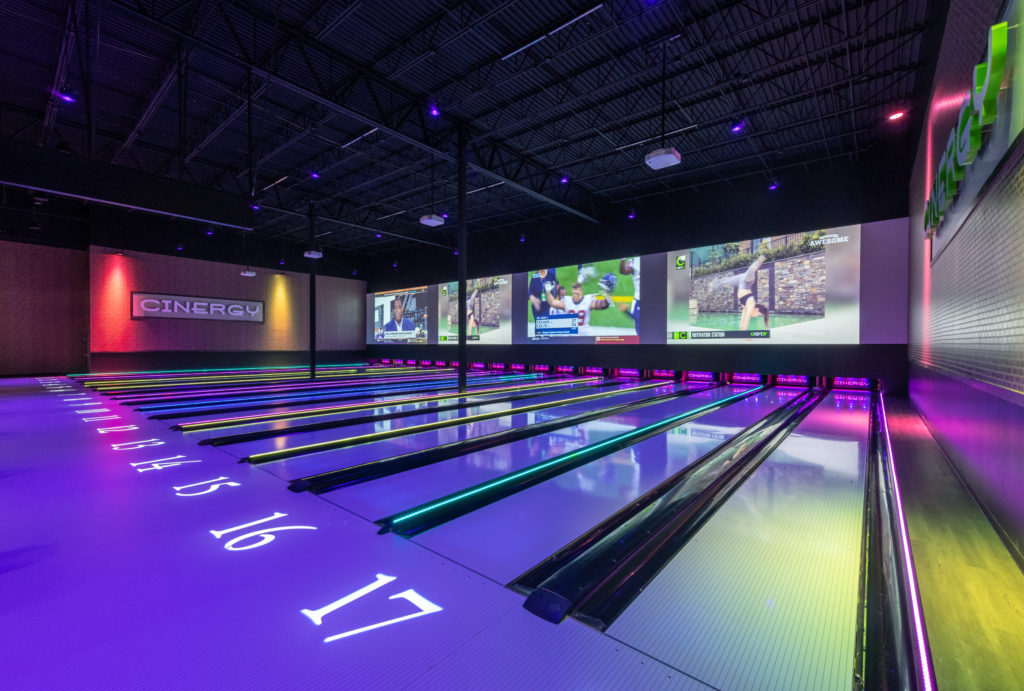
The movie business is such a great complement because you have a consistent pipeline of fresh, new, and appealing movies to draw from. Managing an arcade space or implementing a big attraction, like laser tag or an escape room, it must be very expensive to keep them from growing stale.
Jeff Benson: It’s a whole other challenge and it’s expensive, because you have to switch up the games frequently. There’s always one game that earns really well, and a dozen that hardly earn anything at all. Every year, we swap out the bottom 10 or 15 percent of the games. We go to IAAPA’s convention and drop $12,000 to $15,000, on average, per game, to change out those bottom 10 or 15 games.
What are some of the top games and attractions at your FECs?
Jeff Benson: We added axe throwing a week before we got shut down for the pandemic, back in 2020. It wasn’t as big as we had hoped when we reopened, because people didn’t want to touch the axes, but it’s finally beginning to catch on now.
Recently we pulled out some of our bowling lanes to make room for big virtual reality (V.R.) pieces. I think V.R. is going to be the next big thing. These free-roam V.R. games are so much fun.
Now, I do wonder, somewhere down the road, if movie theaters are going to struggle when movies come out on V.R. headsets. If that happens, we are going to have to compete with that along with streaming. I don’t know if or when that occurs—whether that’s five, 10, or 20 years down the road—but at some point, people are going to be comfortable with wearing a computer on their face. If studios seize upon that and release movies in V.R. headsets, then we’re talking about a whole other level of immersion, and I’m not sure how that battle is going to go.
On our end, we’re putting in what we call a V.R. universe in our latest prototype at Cinergy. It is about a 4,000- to 5,000-square-foot area in the back of the game room with different V.R. pieces. We’re going to be selling time slots by the hour back there and turn V.R. into an attraction like bowling, where you book time by the hour.
To us, that’s the “premiumization” of Cinergy. Our next step is to figure out what our V.R. universe is, what the pieces are going to be, and how to market and sell it. The first one will open in our Greenville, South Carolina project, which is probably about 16 months away from opening.
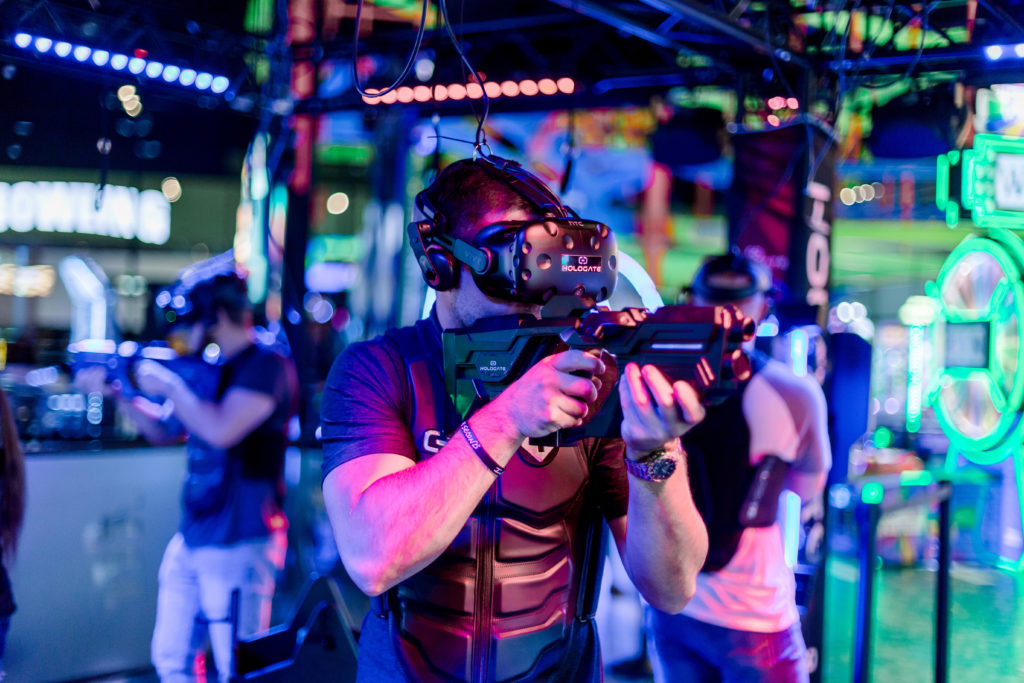
As Cinergy’s FEC concept continues to grow, how much of a role will exhibition play in the expansion?
Jeff Benson: To be honest, we’ve scaled back the number of screens and the size of our new complex in Greenville. It’s gone from 90,000 square feet and 10 screens to 70,000 square feet and seven screens. That decision came down to our concern about the number of releases from Hollywood in the coming years, and as a result we are slightly deemphasizing the theater component in our latest prototypes.
Despite that, everything we do, we look at it through the lens of an exhibitor. We try to be well-rounded in promoting all the different aspects of our business. That’s part of the reason why we brought in so many other people into the organization. To help cover up for the fact that we’re always thinking of Cinergy as a movie theater first.
Jamie Benson: Exhibition is still at the heart of everything we do.

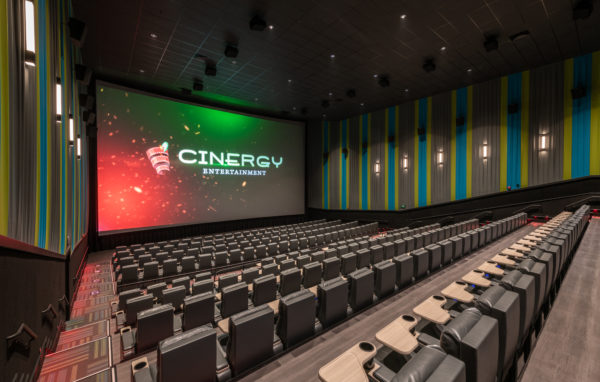

Share this post